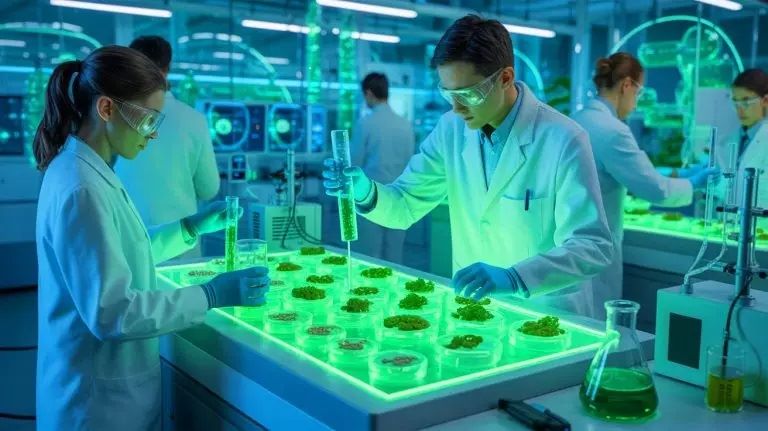Illustration of a revolutionary bio-battery utilizing electroactive microorganisms for sustainable energy storage (AI-generated, non-realistic illustration). Credit: Ideogram.
SOURCES: Sustainability Times
In a groundbreaking advancement for sustainable energy solutions, scientists in China have developed a revolutionary bio-battery that utilizes electroactive microorganisms to achieve unprecedented self-charging capabilities and high efficiency, promising to transform the future of energy storage.
- 🔋 Scientists in China have developed a groundbreaking bio-battery using electroactive microorganisms.
- 🌿 The bio-battery offers sustainable energy storage with high efficiency and self-charging capabilities.
- 🧬 Utilizing living hydrogels, the device maintains high viability and can be 3D-printed into various shapes.
- ⚡ The innovation holds promise for applications in nerve stimulation and environmentally friendly energy solutions.
In recent years, the quest for sustainable energy solutions has taken an exciting turn with the development of bio-batteries. These innovative devices harness the power of electroactive microorganisms to generate energy. Scientists in China have made significant strides by developing a miniaturized, portable bio-battery that offers precise bioelectrical stimulation and self-charging capabilities. This revolutionary advancement promises to transform how we think about energy storage and conversion, paving the way for a more environmentally friendly future.
Bio-Battery Maintained a High Viability
The development of bio-batteries marks an exciting advancement in the field of sustainable energy technology. The research team, as published in Advanced Materials, has created a miniaturized bio-battery using living hydrogels. These hydrogels, which are 3D printable into various shapes, contain conductive biofilms encapsulated in an alginate matrix. This innovative design ensures the bio-battery maintains a high viability of over 70% throughout its operation, with a remarkable 97.6% at the end.


